
 |
|
|
#1 |
|
All the news that's fit to excerpt
Name: newsie
Location: who knows?
Join Date: Jun 2008 Motorcycle(s): only digital replicas Posts: Too much.
|
[cycleworld.com] - 2023 Kawasaki ZX-4RR KRT Edition Coming to the US
A class from the past is reborn in Kawasaki’s 400cc inline-four powered ZX-4RR KRT Edition supersport. And it’s coming to the US this spring.
Click here to view on their site. 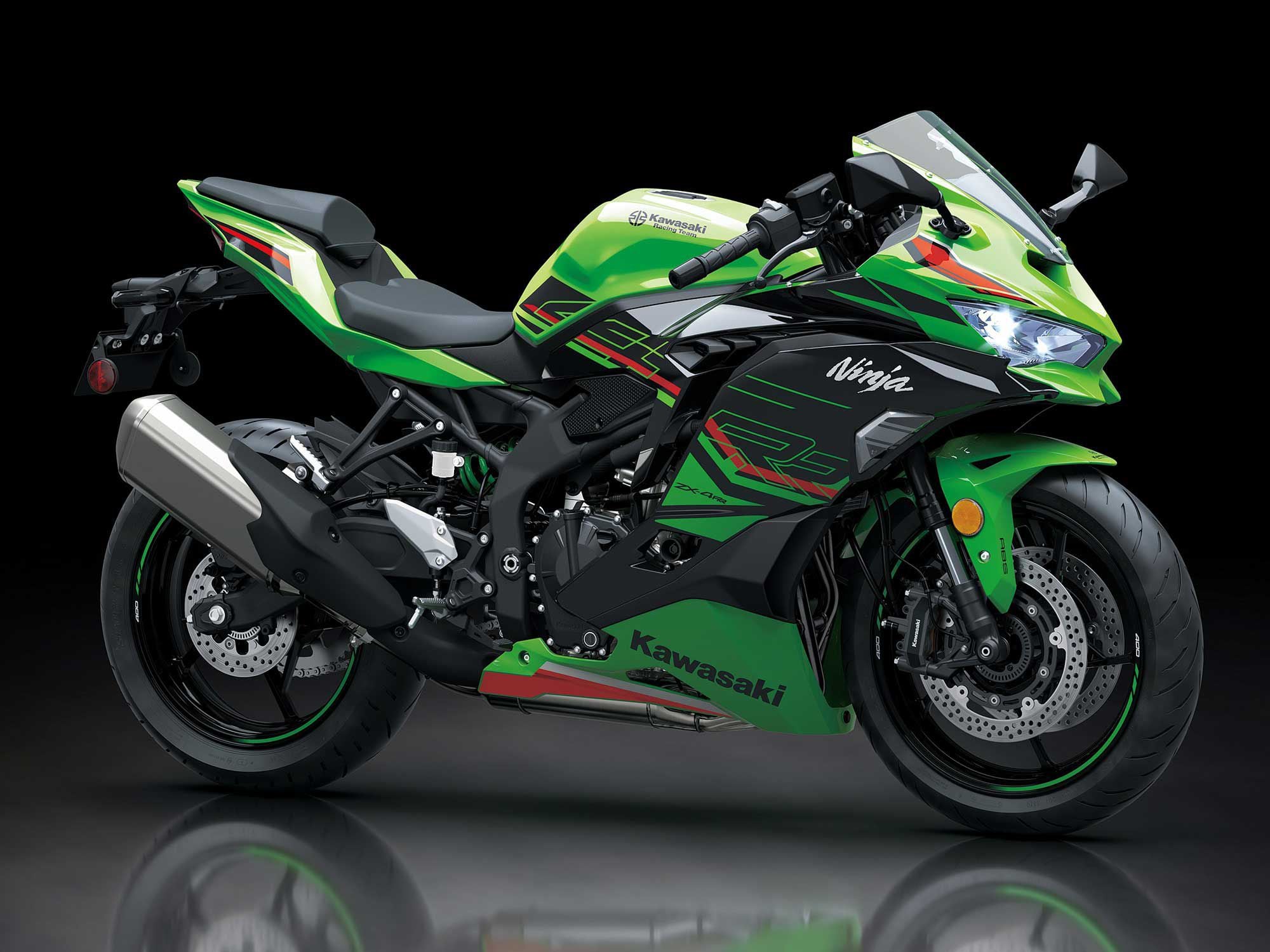 Kawasaki brings the 400cc supersport back to the US with the introduction of the ZX-4RR KRT Edition. (Kawasaki/)Holy crap! That’s honestly the very first thing that came to mind when information on the brand-new 2023 Kawasaki ZX-4RR was delivered to our inboxes. There are honestly so many reasons why this motorcycle shouldn’t exist in this day and age, and yet here it is, and we couldn’t be happier. 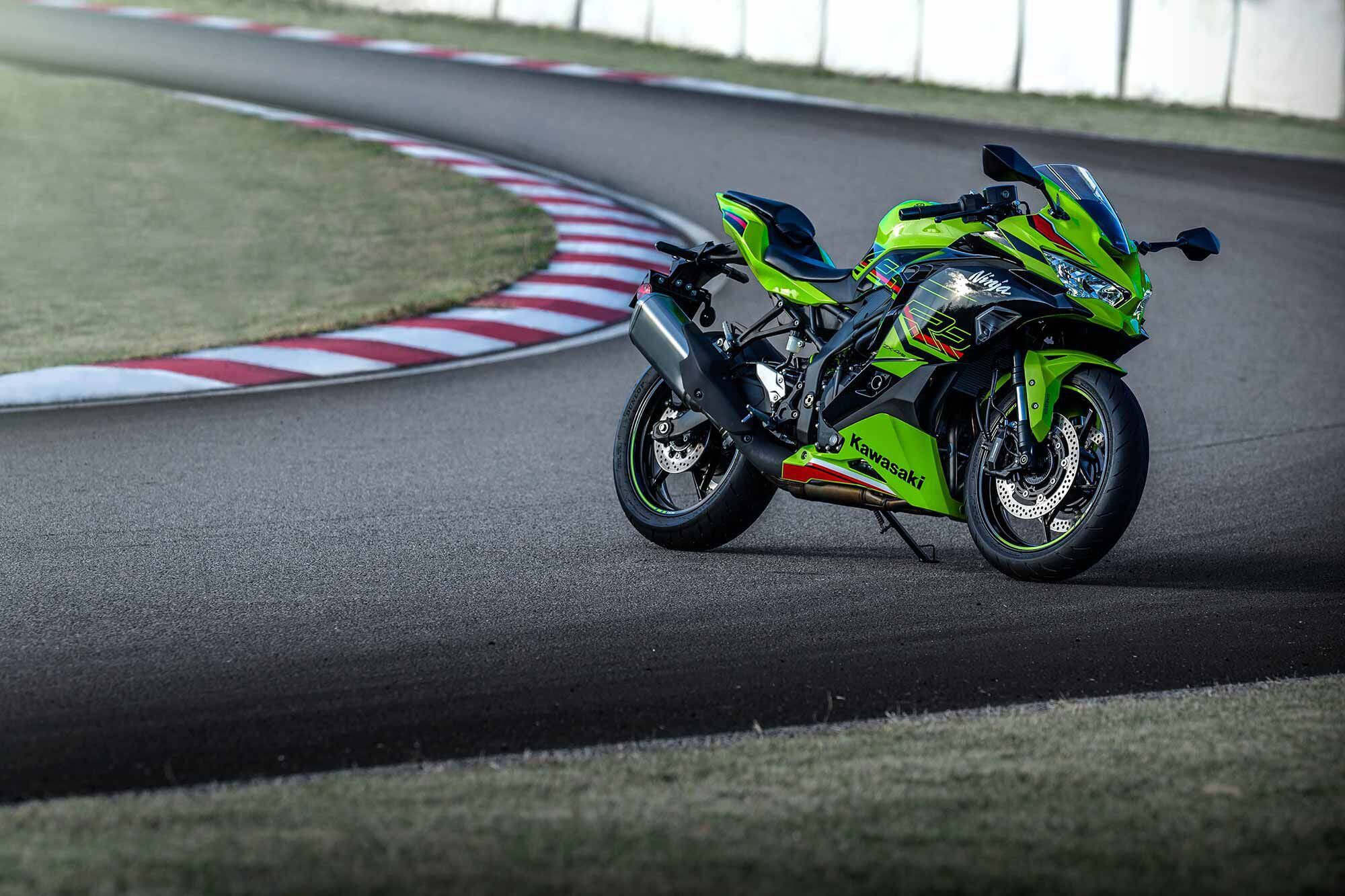 The brand-new Kawasaki ZX-4RR KRT Edition in its intended environment, the Autopolis International Circuit in Kyushu, Japan. (Kawasaki/)A quick history lesson is in order here for those who don’t remember the heyday of sportbikes in the late 1980s to mid-’90s. For those of you who do, you’ll recall the forbidden fruit that was the Japanese market 400cc four-stroke inline-fours, and 250cc two-stroke twins that were built to compete in that country’s F3 series. As a production-based series, the motorcycles that were built for homologation were some of the trickest motorcycles on the planet. Unfortunately, that also meant that they were expensive, much more so than their 600cc stablemates, detering US importers from bringing them in. The only motorcycle to ever “officially’' make it Stateside at the time (outside of the grey market) was Yamaha’s FZR400. 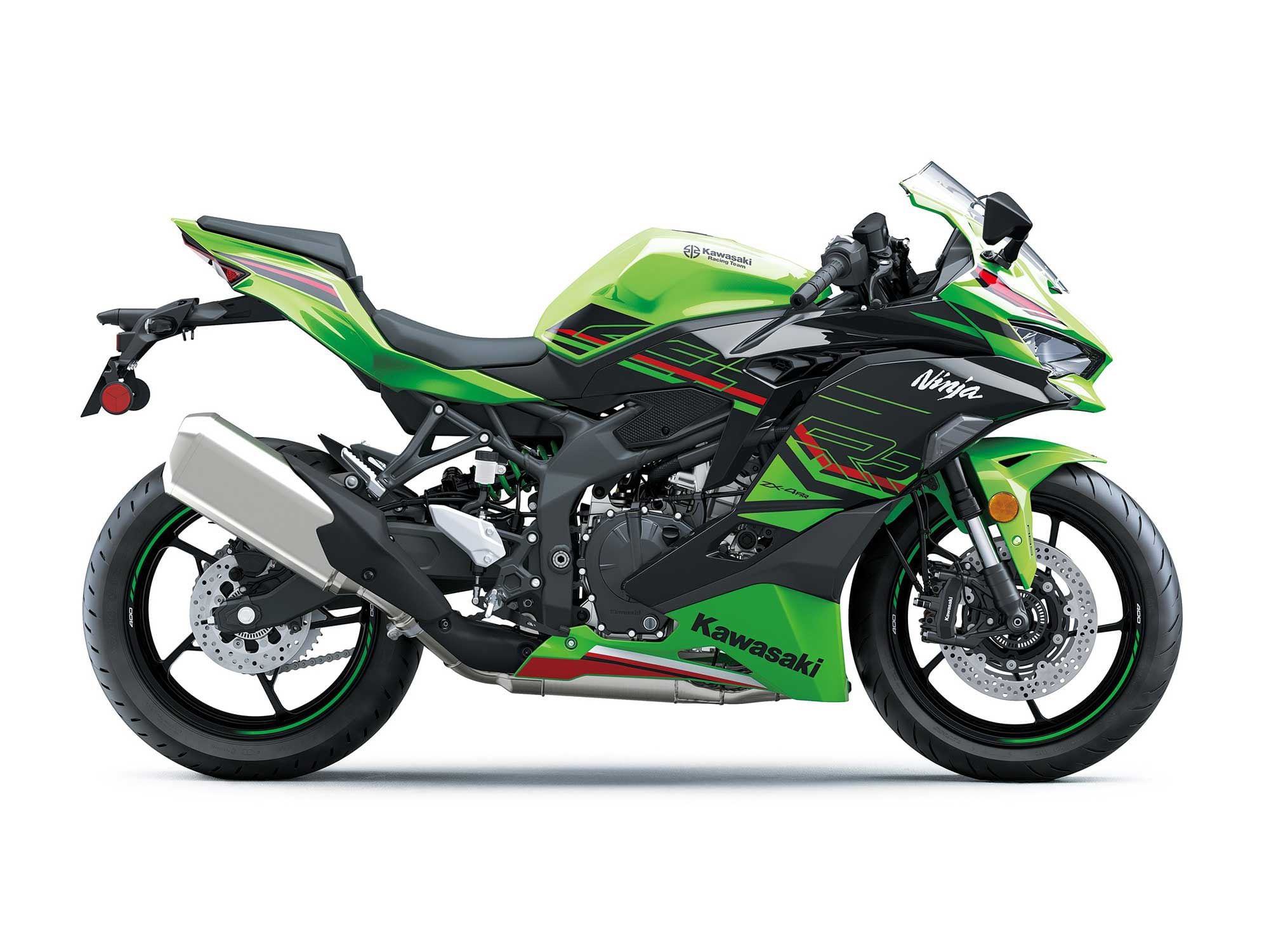 Pipeside studio view. (Kawasaki/)Bikes like the Yamaha FZR400RR SP, Honda CBR400RR, Suzuki GSX-R400, and Kawasaki ZXR-400R, and the Honda V-four powered VFR400R (NC30) were highlighted in the September 1990 issue of Cycle World in an article titled “The Untouchables.” Even 30-plus years ago, there didn’t seem to be a glimmer of hope that we’d ever see another 400cc inline-four sportbike in the US. 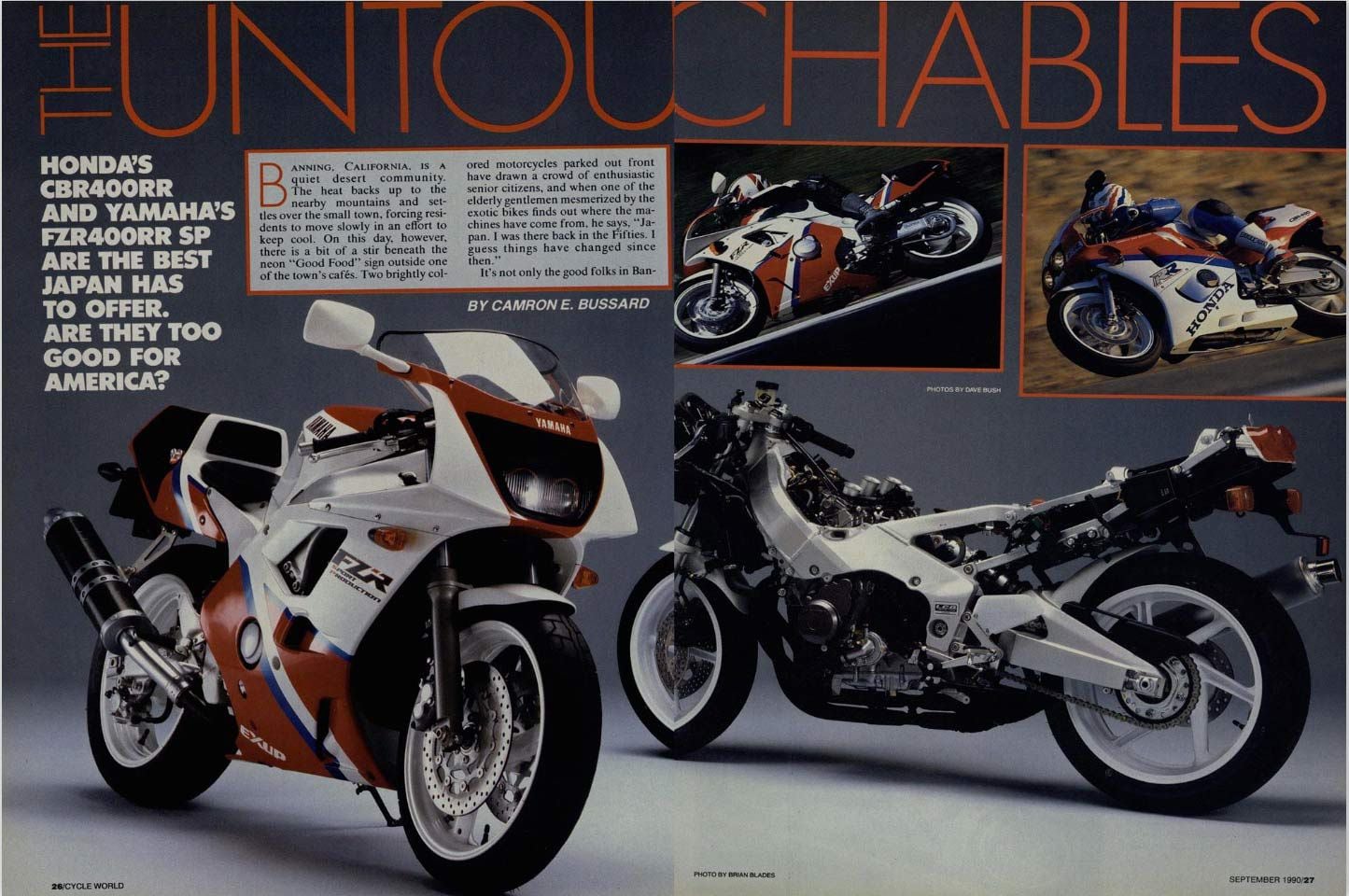 This issue has been burned into the brains of sportbike nuts for 30-plus years. (Cycle World Archives/)Just a few months ago we published news of the Kove 400RR, a chinese market inline-four supersport that is expected to be sold in that home market, but we also heard rumors that Kawasaki planned to bring us this new ZX-4RR. We just didn’t believe it was possible. There are a lot of reasons that manufacturers are steering clear of inline-fours in general, as Kevin Cameron explained in his recent story that you can read here. But most of it boils down to strict Euro 5 emission standards. 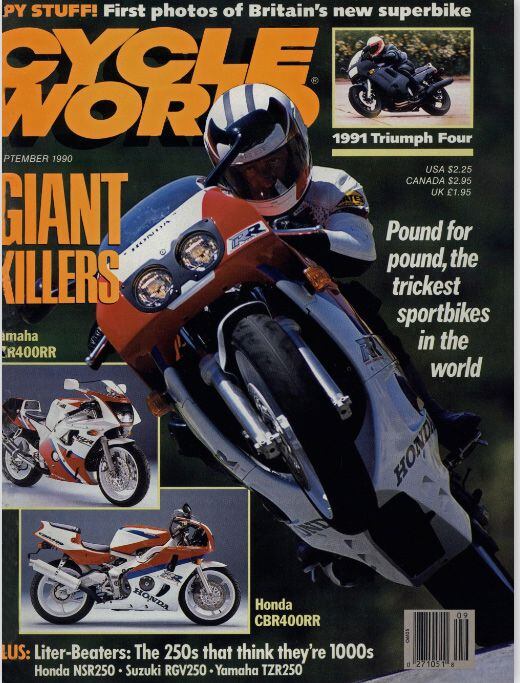 Back when we could only dream about 400cc supersport bikes coming to the US. (Cycle World Archives/)With all of the factors seemingly stacked against the release of a modern iteration of the ZXR-400R, we’ll have to dig deeper into how it came to be when we get a chance to ride the bike in the near future. But for now let’s dig into what we know about the ZX-4RR KRT Edition. Engine At the heart of the ZX-4RR is a liquid-cooled, DOHC, 16-valve inline-four displacing 399cc. Bore and stroke measure 57.0 x 39.2mm, which is almost identical to the 1990 ZXR-400R, which measured 57.0 x 39.0mm and displaced 398cc. From there, however, this new engine is fully modern, benefiting from more than 30 years of technological advancement, including electronics that simply didn’t exist back then. Engine redline is 16,000 rpm. 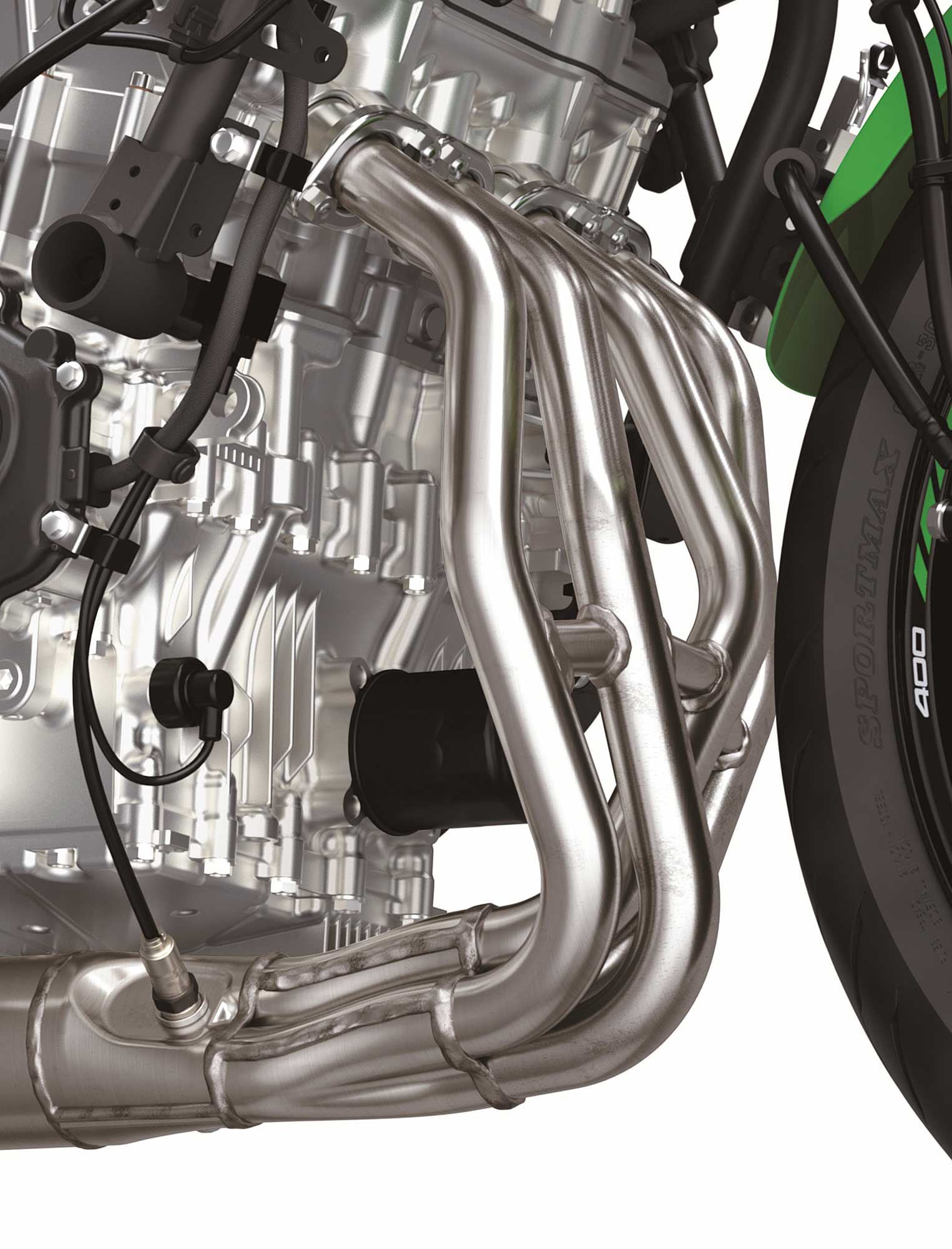 The 399cc inline-four that powers the ZX-4RR revs to 16,000 rpm and makes peak torque at 11,000. Kawasaki didn’t provide claimed horsepower. (Kawasaki/)Ingesting air from the front of the fairing is a ram air duct that feeds the airbox via intake funnels in two different lengths of 40 and 60mm. The engine’s large oversquare bore allows for more valve area with 22.1mm intake and 19mm exhaust valves. Feeding the engine are 34mm throttle bodies with Kawasaki’s latest Electronic Throttle Valves (ETV), allowing the high-spec ECU (rider aids are discussed below) to precisely control both the fuel to the injectors and the air entering the intake stream. The intake ports are cast with a super fine sand, resulting in smooth surfaces. The intake port area near the valves has been machined to create a very straight path into the combustion chambers to maximize airflow. 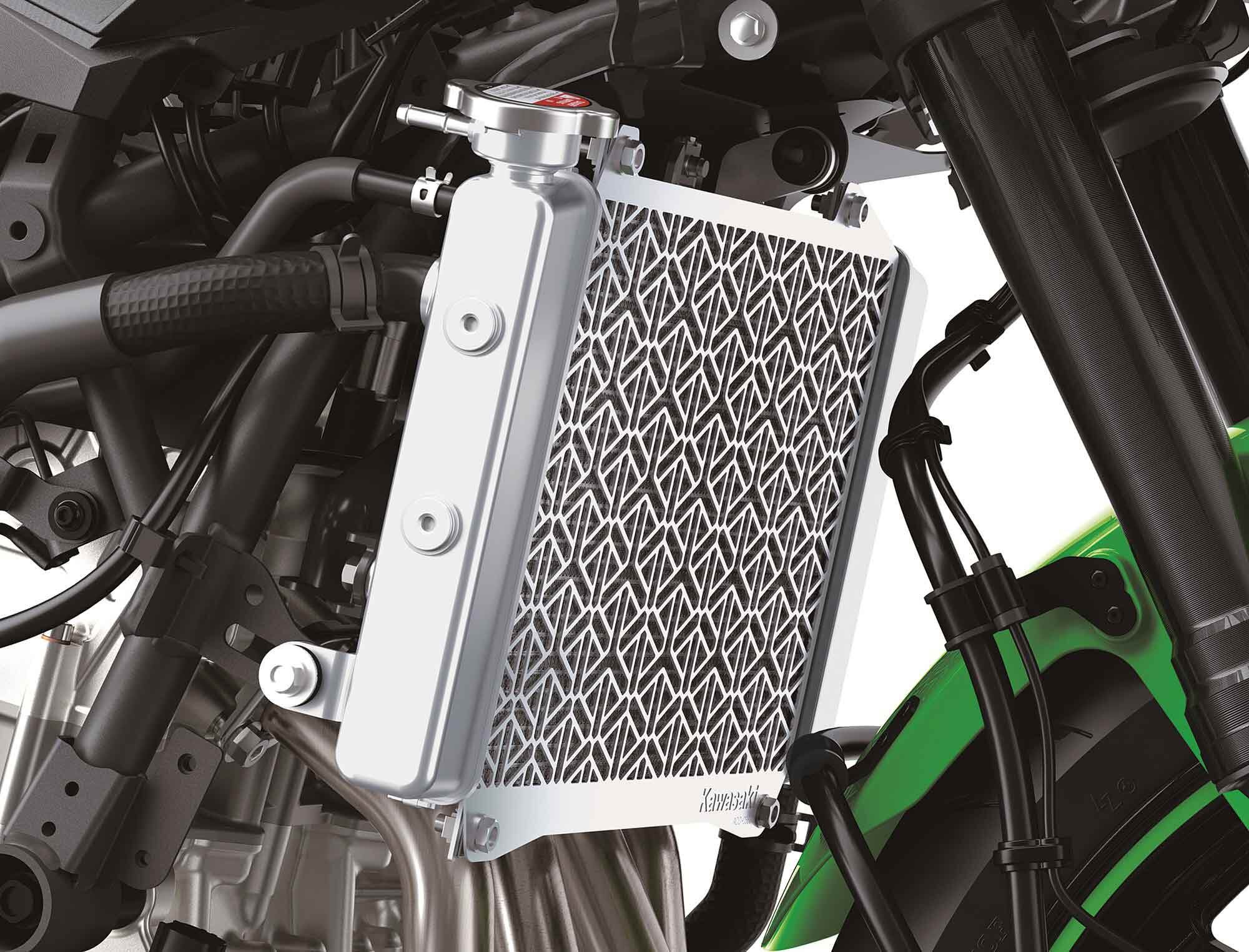 A 30-row radiator keeps the engine cool. (Kawasaki/)Ultra-lightweight cast-aluminum pistons have a molybdenum coating on the skirts for durability, while a reasonable 12.6:1 compression ratio ensures regular gasoline can be used (for reference, the 1990 model’s compression ratio was 12.1:1). Pistons slide in die-cast aluminum cylinders with an open deck design. The connecting rods have a carburizing treatment to help improve durability, while the crankshaft’s light flywheel mass contributes to the engine’s quick-revving nature. 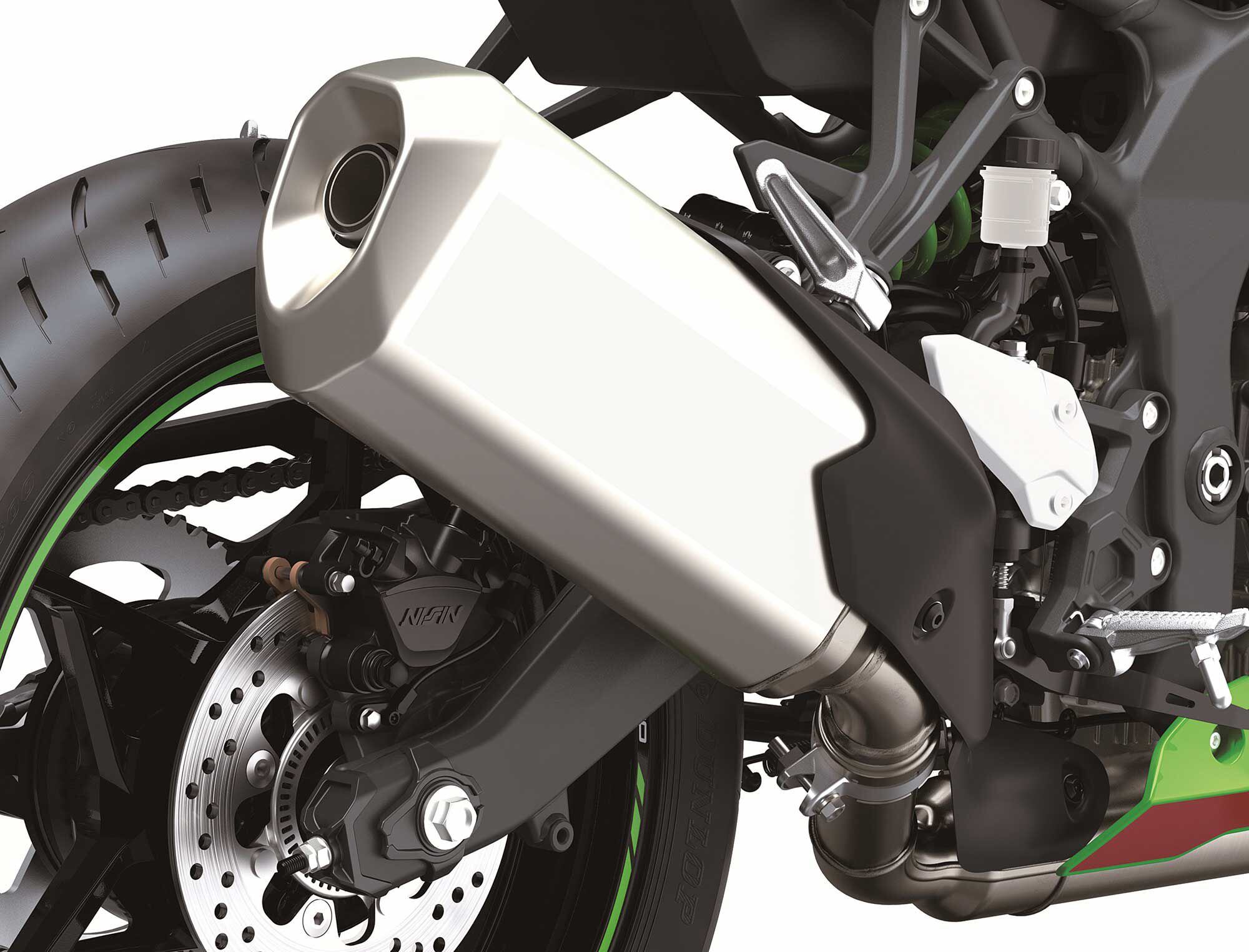 A long, traditional-style exhaust silencer is downstream from a trio of catalytic converters. (Kawasaki/)Spent gasses exit the engine into four header pipes that have joint pipes in between them, then into a under-engine collector with a trio of catalytic converters (expensive, and part of how the bike is able to meet current emissions requirements), and then into a long traditional looking sportbike silencer. Power is passed through Kawasaki’s Assist & Slipper clutch into the six-speed transmission that comes with a standard Kawasaki Quick Shifter (KQS) that allows clutchless up- and downshifts. Electronics Perhaps the single biggest difference between those 400cc exotics of the late ‘80s and early ‘90s and this modern F3 wanna-be are the electronics. Not only does the ECU (which is similar to the unit in the Z H2), offer a level of engine management that didn’t even exist in Grand Prix racing back in the day, but it opens the door to a ton of rider aids that align the bike with the other fully modern family members like the ZX-6R and ZX-10R. 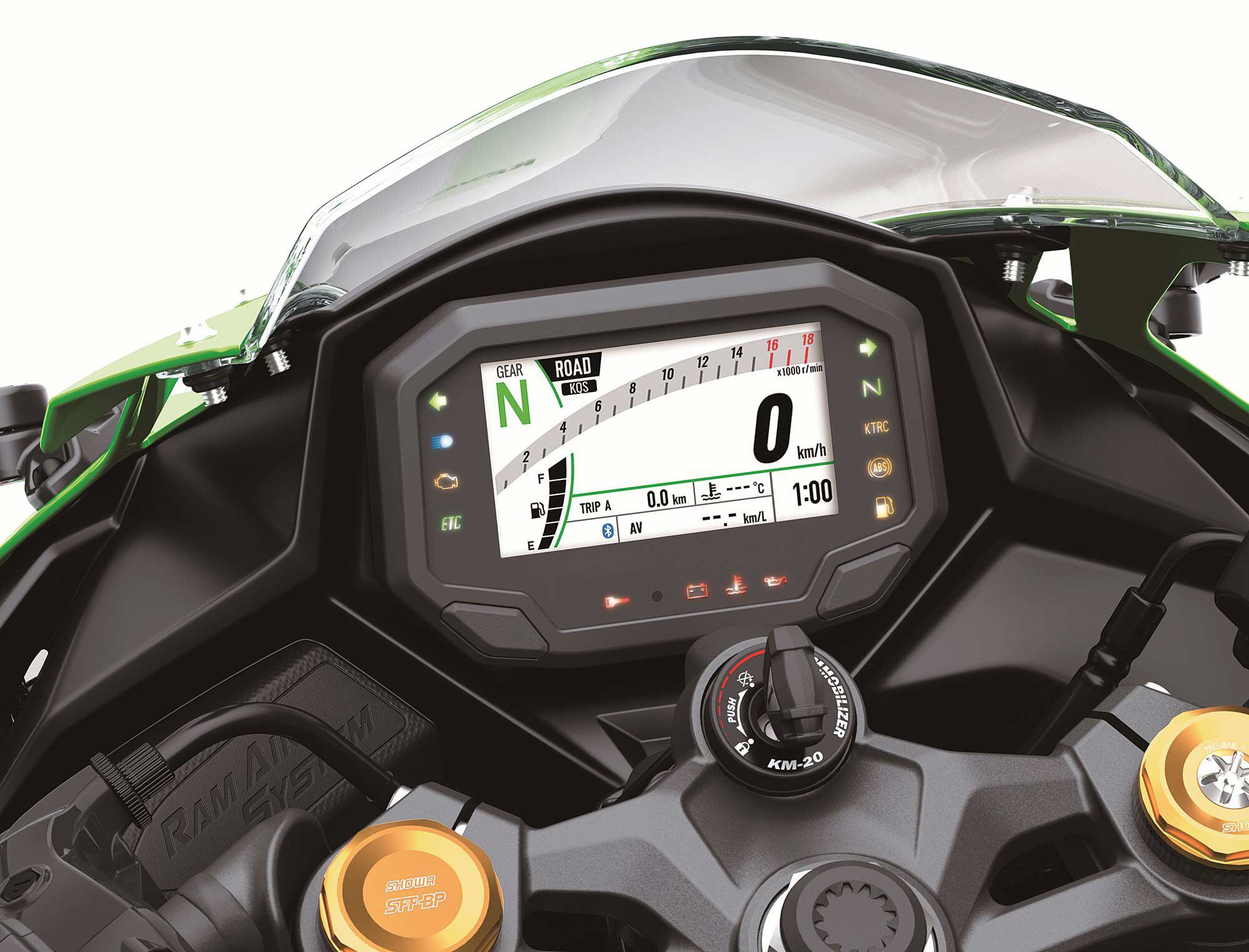 The 4.3 inch TFT display in standard street mode. (Kawasaki/)At the center of the system are the Integrated Riding Modes with four options including Sport, Road, Rain, and Rider (the latter of which allows manual selection of the parameters). The first three options have optimized settings for different types of riding, while the Rider mode allows the user to choose between three levels of intervention on the Kawasaki Traction Control (KTRC), and between two power modes: Full or Low with milder response. The TC can also be turned off completely. As mentioned above, the ZX-4RR comes with an up and down quickshifter as standard. 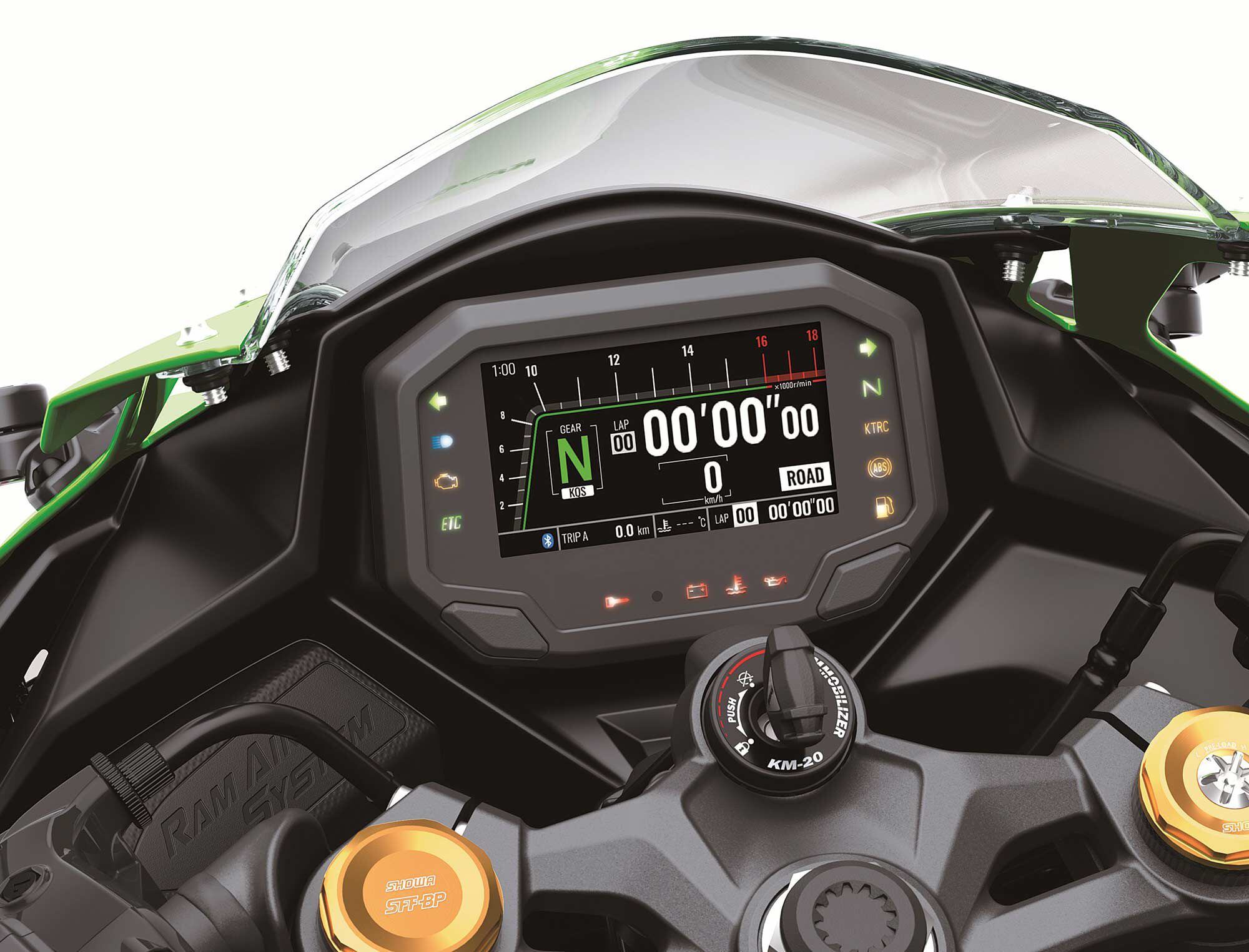 Circuit mode provides only the info needed for track riding. (Kawasaki/)The rider interface to access all of these settings is anchored by a 4.3-inch full-color TFT display. Multiple screen modes can be selected, including a circuit mode that prominently displays track-related information such as the lap timer, tach, and gear-position indicator. The display can also be customized with dark or light themes and the brightness level is automatically adjusted based on ambient lighting conditions. Using Rideology The App, the rider can link their smartphone to the bike and access various vehicle info, a riding log, mobile phone notices and customize settings to preference. 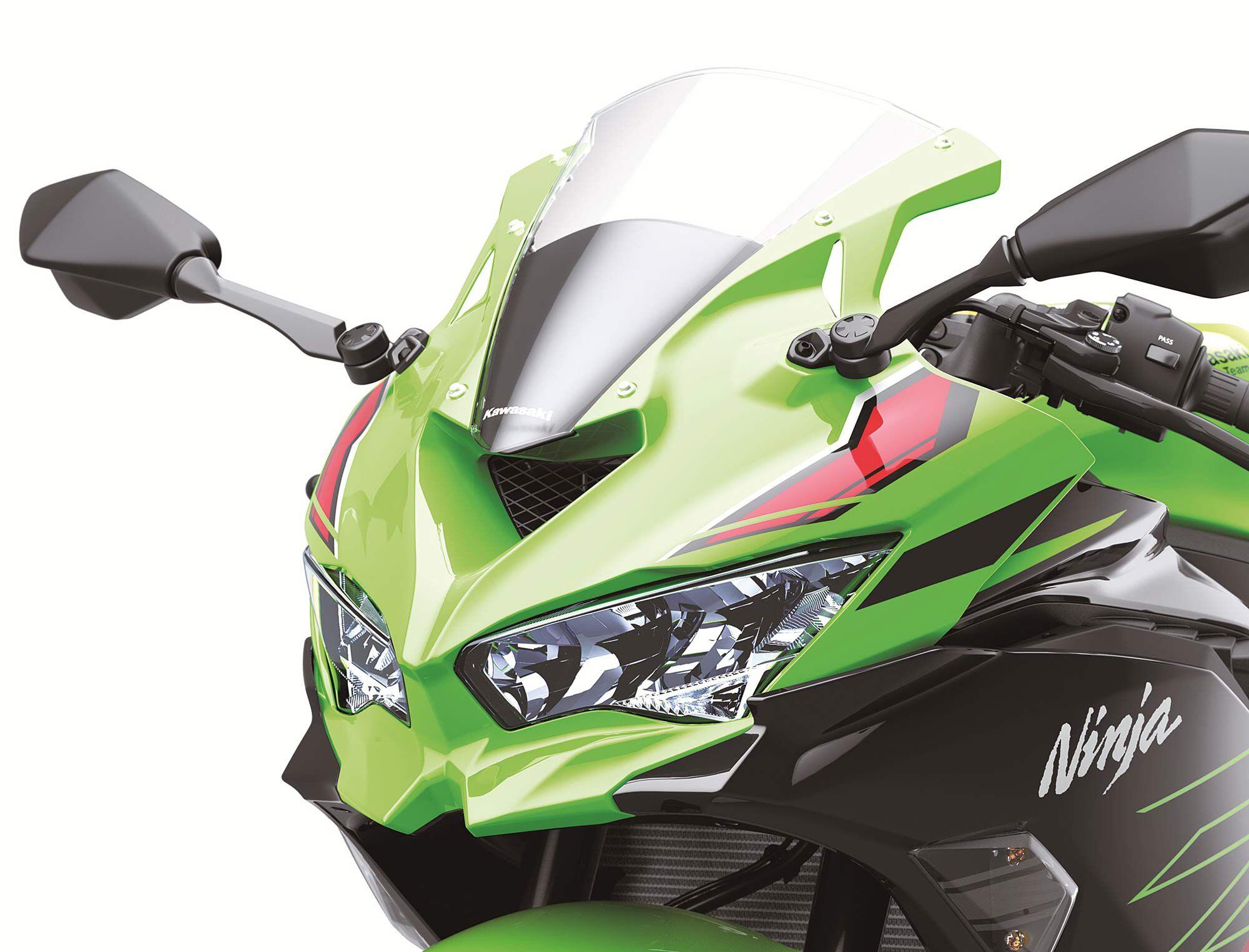 LED headlights are used up front. (Kawasaki/)The ZX-4RR features twin LED headlights and taillight, while the front LED turn indicators are integrated into the front lower fairings’ leading edge. Slim LED turn signals are mounted to the license-plate bracket at the rear. 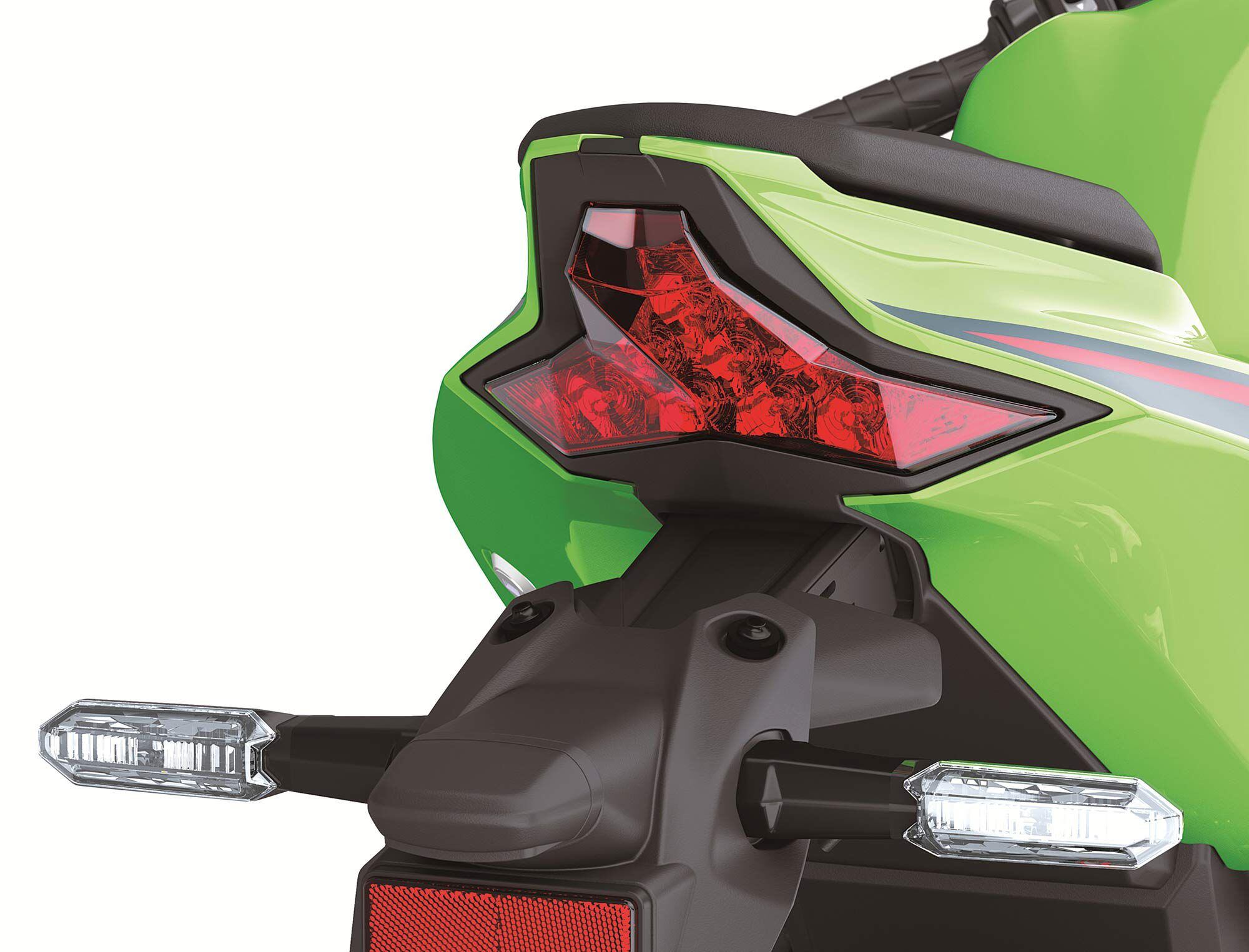 An LED taillight and LED turn signals are used at the rear. (Kawasaki/)Chassis While those trick 400s of old brought stout aluminum perimeter frames to the public (they’d previously only been used in Grand Prix racing), the new ZX-4RR uses a cost-effective steel-trellis frame and a steel banana-style swingarm. Looking at the spec chart, we see that the wheelbase measures 54.3 inches, which happens to be identical to the Asian-market Kawasaki ZX-25R, that this 4RR is largely based on. Front-end geometry has 23.5-degrees of rake and 3.8 inches of trail, which are actually a bit more aggressive than the 250?s and in fact quite similar to the quick-steering 400s of old. Claimed wet weight is 415 pounds, so expect about 391 when weight of the 4.0 gallons of fuel is subtracted. As always, we’ll get you the real number on the CW scale when we get a testbike.  Stripped of its bodywork, you can see the steel-trellis frame and steel banana-style swingarm. (Kawasaki/)Like the ZX-25R, the ZX-4RR utilizes a 37mm inverted Showa SFF-BP (Separate Function Fork-Big Piston) fork with provision for spring preload adjustment. The advantages of this fork are that a larger-diameter damping piston is used compared to a cartridge-style fork. This reduces damping pressure which allows the stanchions to move more freely. The rear suspension features a horizontal back-link mounted Showa BFRC (Balance Free Rear Cushion) Lite shock. The position of the shock and link is above the swingarm which also gets it out of the way of engine and exhaust heat. The shock has provisions for preload, compression and rebound damping adjustment. 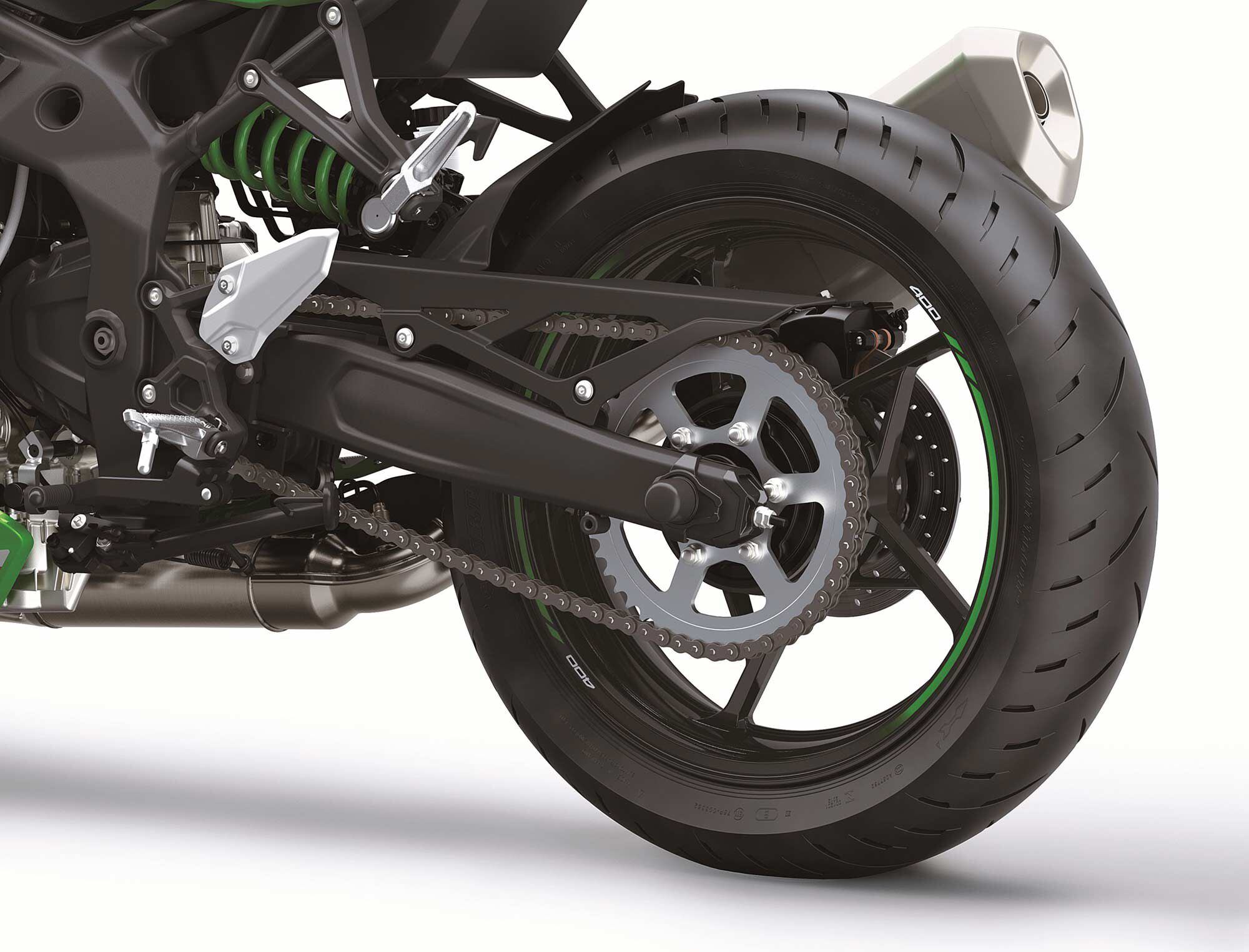 The horizontal back-link mounted Showa shock allows for high mounting. (Kawasaki/)Braking is handled by a pair of radial-mount four-piston calipers up front. The calipers have a pair of 32mm pistons in the upper body and two 30mm pistons in the lower section. Twin 290mm semi-floating discs are used up front while a 220mm disc with a single-piston caliper is used for the rear. The latest Nissin ABS control unit is used, but there is no mention of a six-axis IMU, so that means a traditional ABS system without lean-angle-informed intervention. 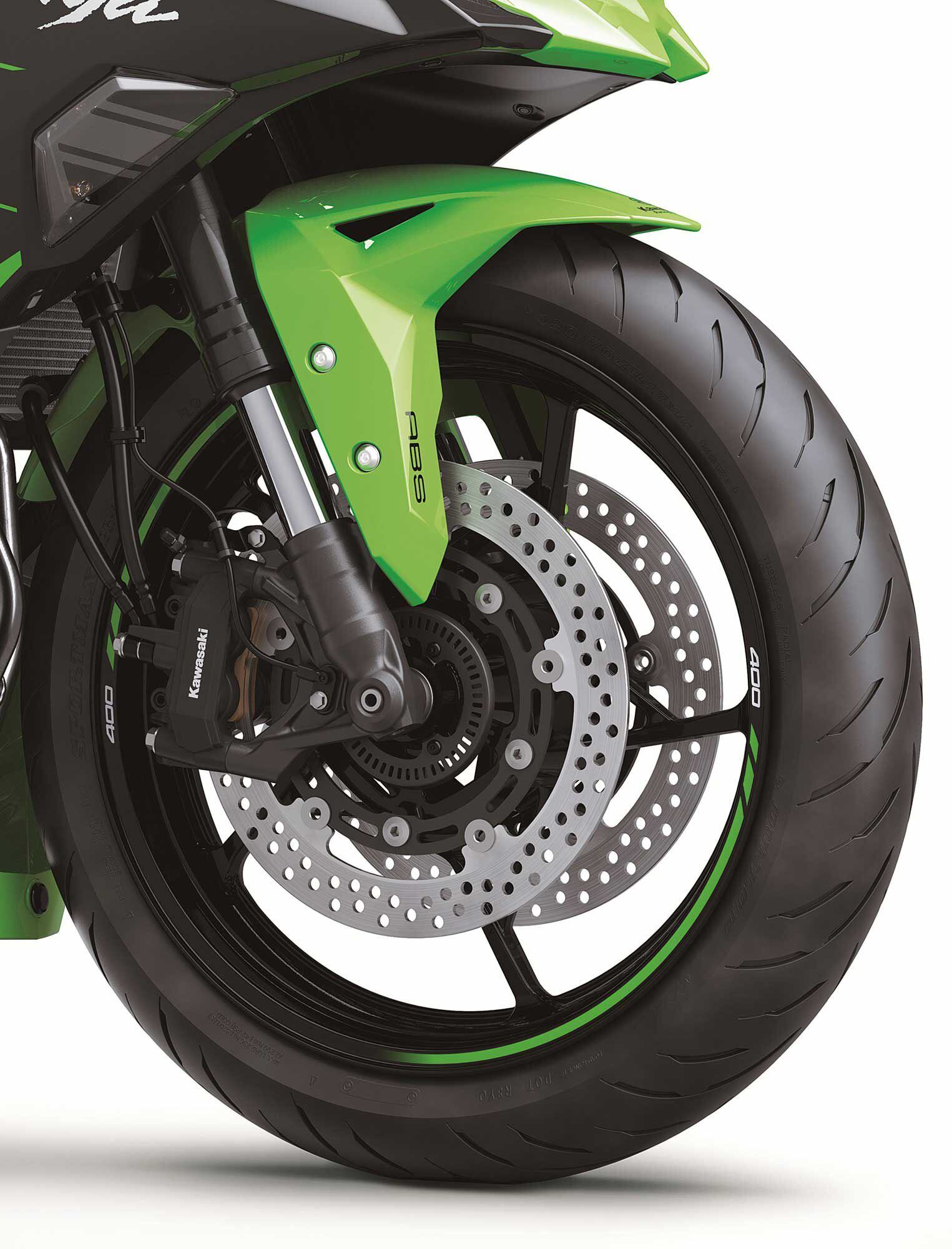 Up front is a 37mm inverted Showa SFF-BP fork on which hang a pair of radial-mount four-piston calipers that squeeze twin 290mm discs. (Kawasaki/)Five-spoke aluminum-alloy wheels are mounted with Dunlop Sportmax GPR-300 tires in 120/70-17 front and 160/60-17 rear sizes. Conclusion We can’t for a second imagine the brand-new ZX-4RR KRT Edition will disappoint. With more than 30 years of evolution since these 400cc inline-fours ruled the streets and racetracks of Japan, we are frothing at the mouth for the opportunity to throw a leg over one. The 4RR will be available in one color scheme, the Lime Green/Ebony you see here, and is scheduled to hit showrooms this coming spring with a $9,699 MSRP. If you’ve ever dreamed of owning a 400cc screamer like this, it’s very likely the very last of the very last of a breed that we thought had previously died. Once we get a chance to ride it, we’ll report if it lives up to our own hype. 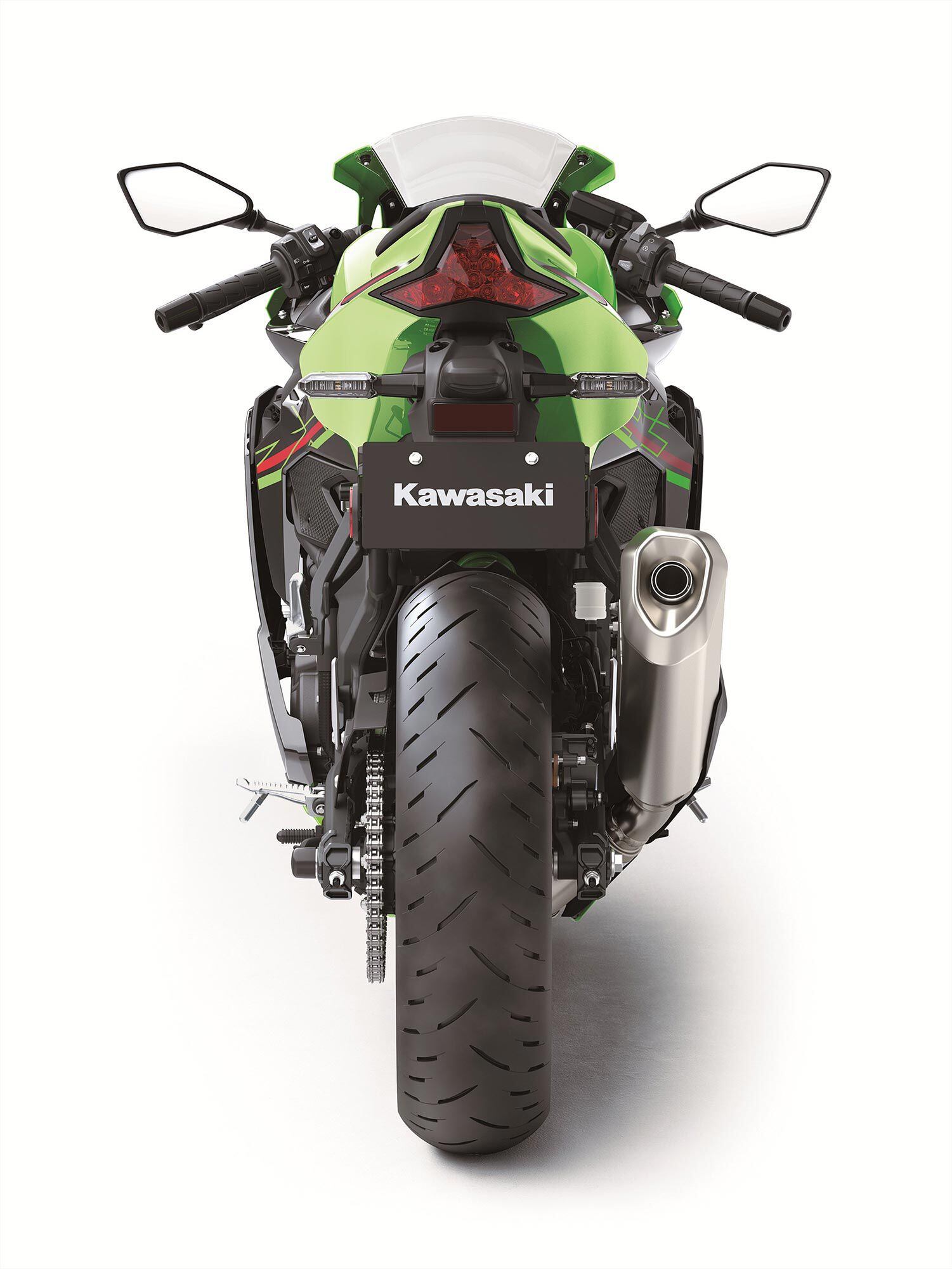 2023 Kawasaki ZX-4RR KRT Edition rear view. (Kawasaki/) 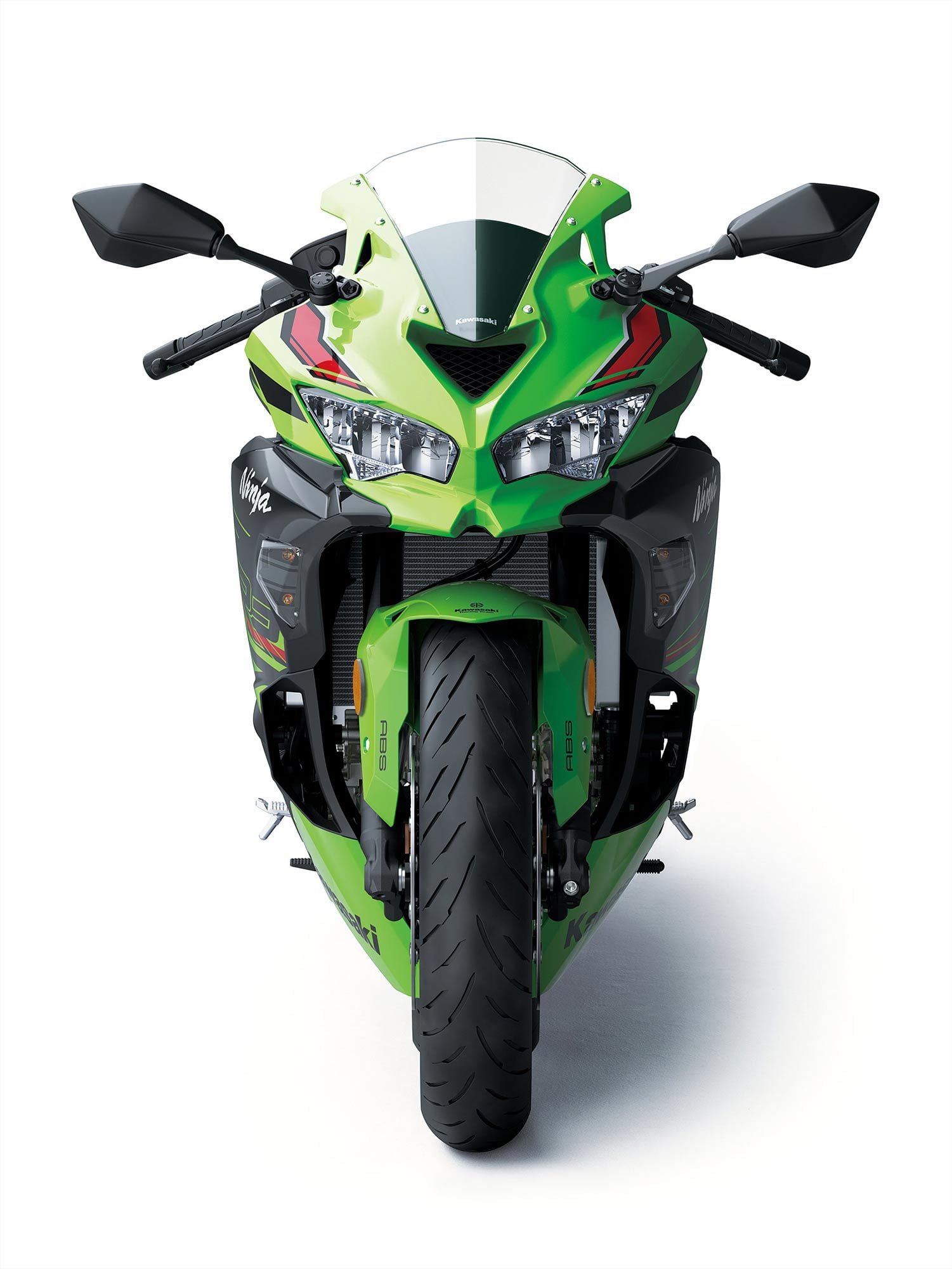 2023 Kawasaki ZX-4RR KRT Edition front view. (Kawasaki/) 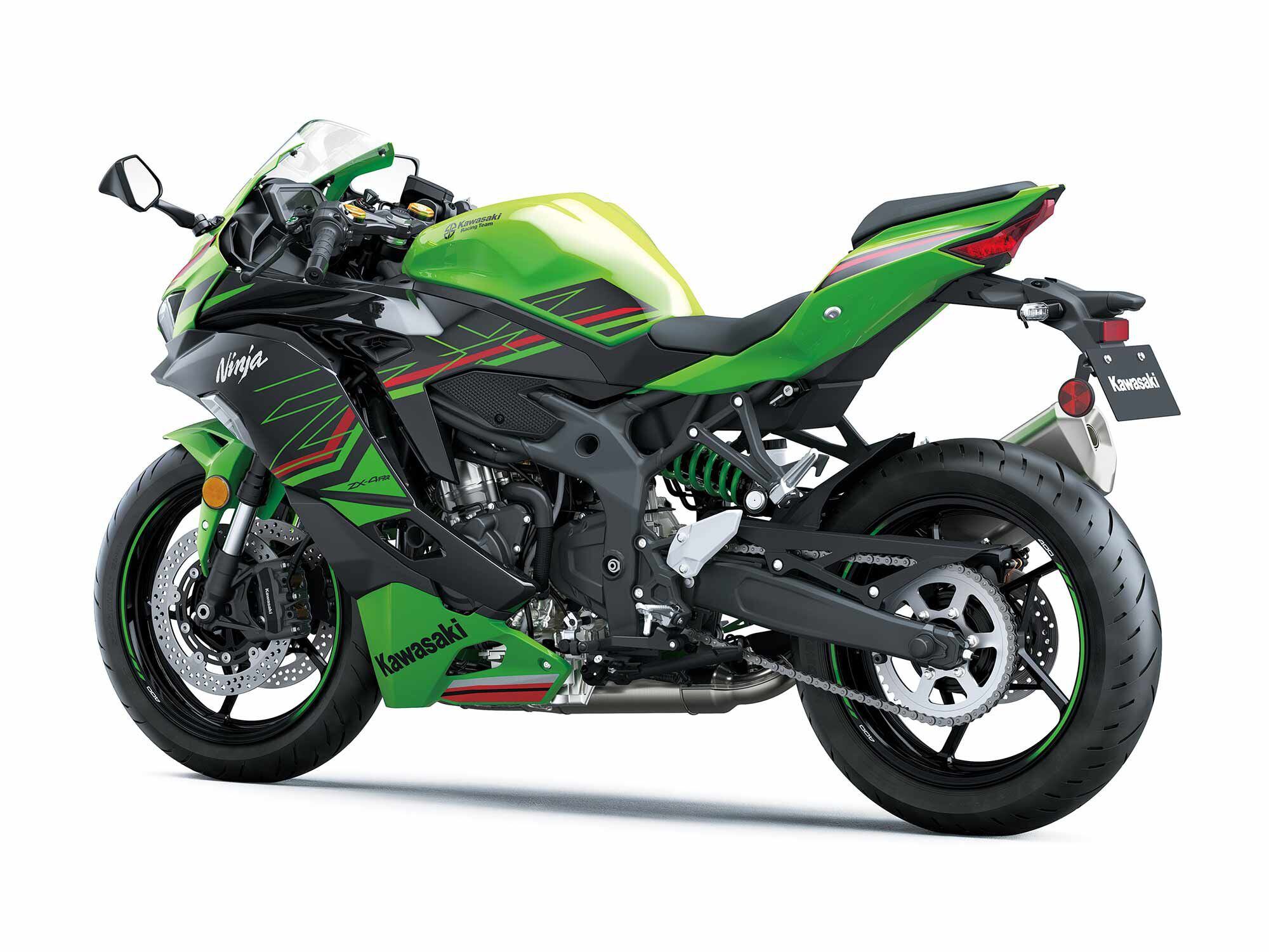 2023 Kawasaki ZX-4RR KRT Edition left side. (Kawasaki/) 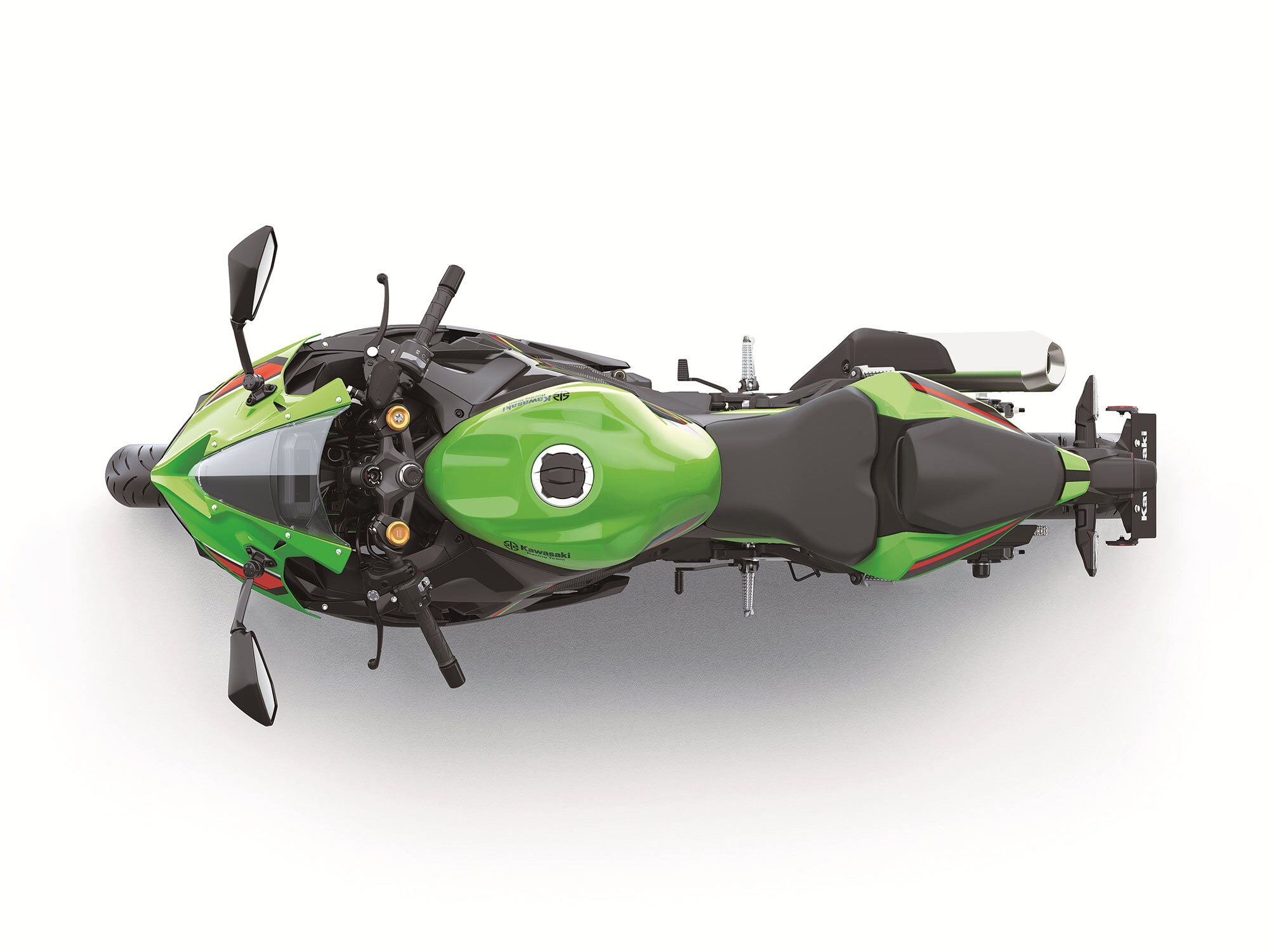 2023 Kawasaki ZX-4RR KRT Edition top view. (Kawasaki/) 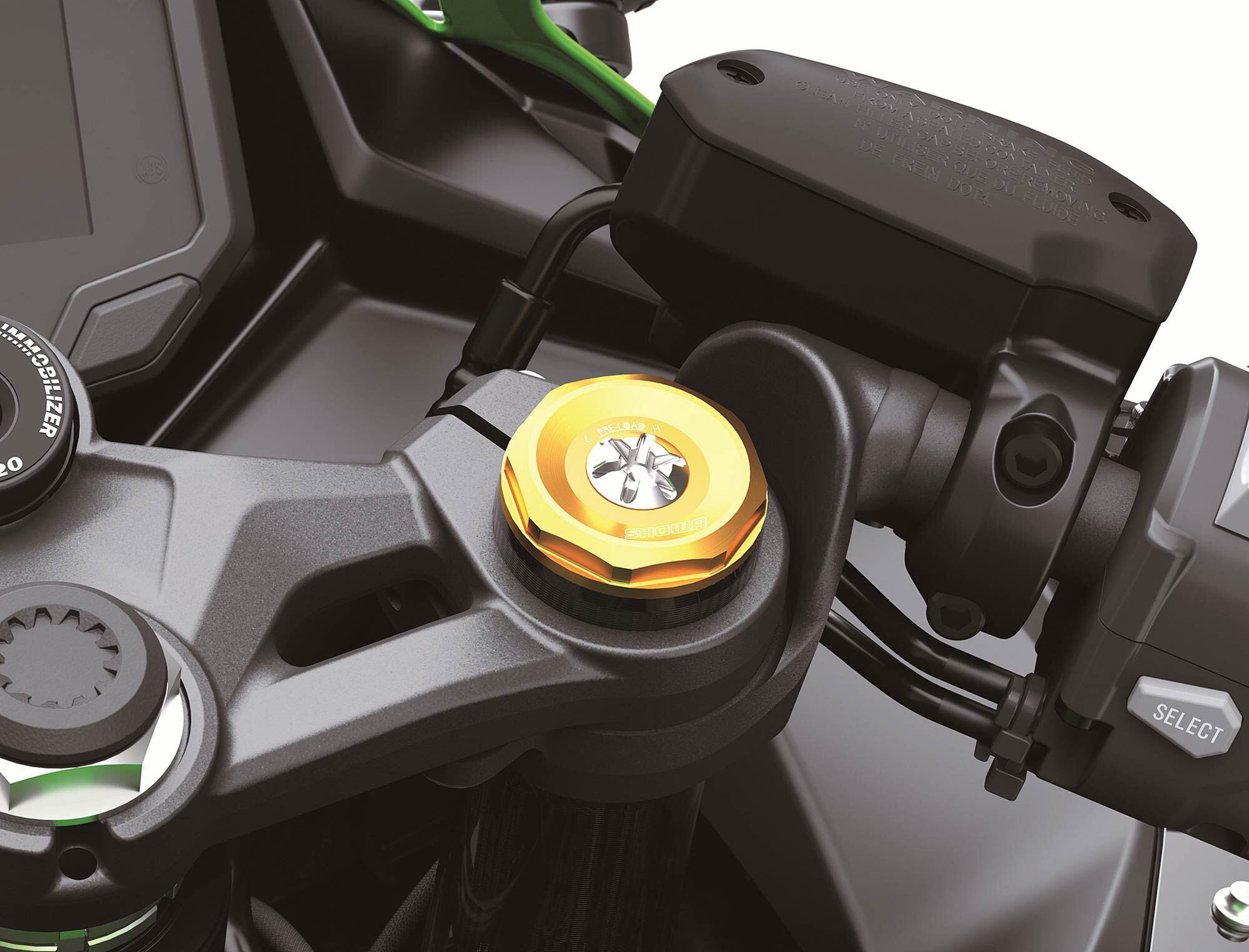 2023 Kawasaki ZX-4RR KRT Edition, Showa SFF-BP fork. (Kawasaki/) 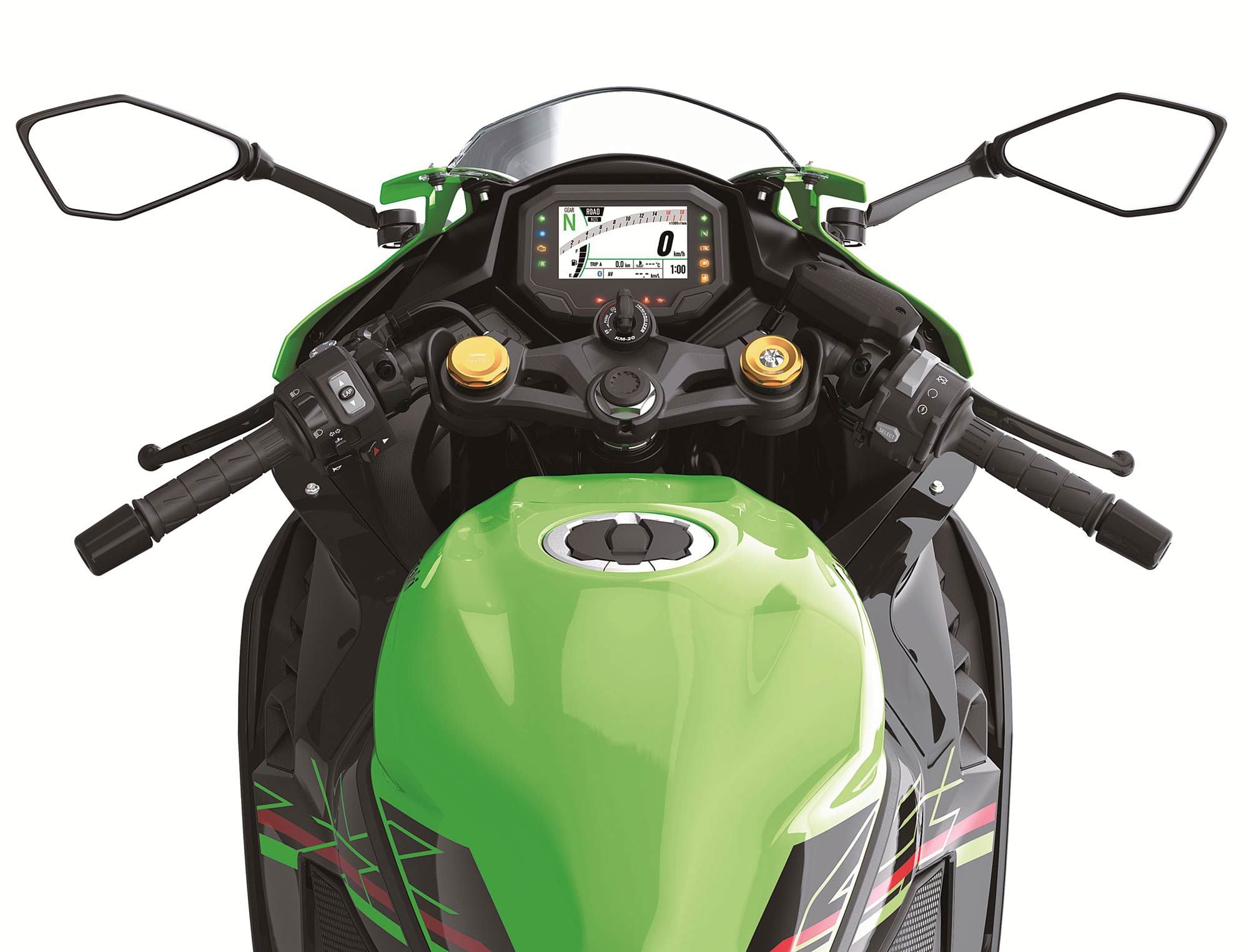 2023 Kawasaki ZX-4RR KRT Edition cockpit view. (Kawasaki/)2023 Kawasaki ZX-4RR KRT Edition Specifications MSRP:$9,699Engine:Liquid-cooled, DOHC, inline-four, 4 valves cyl.Displacement:399ccBore x Stroke:57.0 x 39.1mmCompression Ratio:12.6:1Transmission/Final Drive:Six-speed/chainClaimed Horsepower:N/AClaimed Torque:26.5 lb.-ft. @ 11,000 rpmFuel System:DFI w/ 34mm throttle bodiesClutch:Assist with slipper functionEngine Management/Ignition:TCBI with digital advanceFrame:Steel-trellisFront Suspension:37mm inverted Showa SFF-BP fork/spring preload adjustableRear Suspension:Showa BFRC Lite Shock/fully adjustableFront Brake:Dual radial-mount, four-piston calipers/290mm discs; ABSRear Brake:Single piston caliper/220mm disc; ABSWheels, Front/Rear:Cast-aluminumTires, Front/Rear:120/70-17 / 160/60-17Rake/Trail:23.5°/3.8 in.Wheelbase:54.3 in.Ground Clearance:N/ASeat Height:31.5 in.Fuel Capacity:4.0 gal.Claimed Wet Weight:415 lbs.Company:kawasaki.com
__________________________________________________
I'm a bot. I don't need no stinkin' signature... |
|
|

|